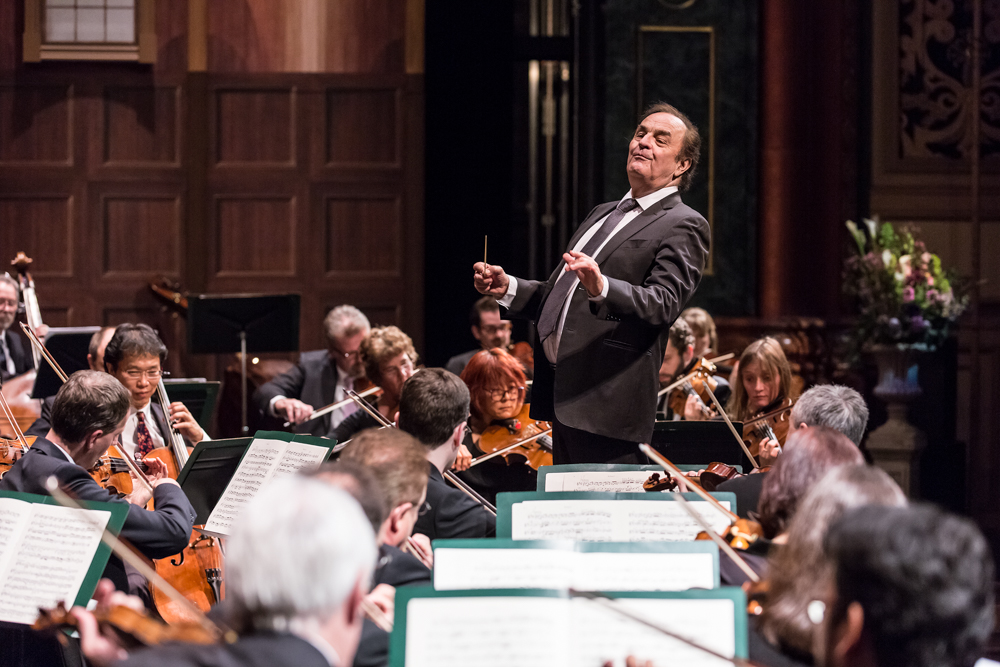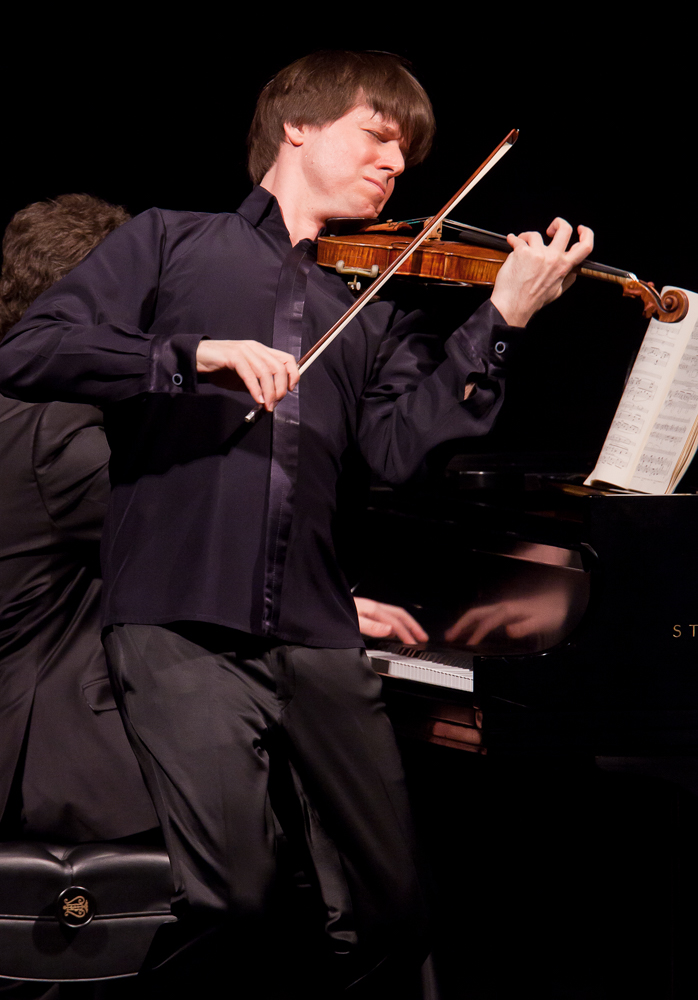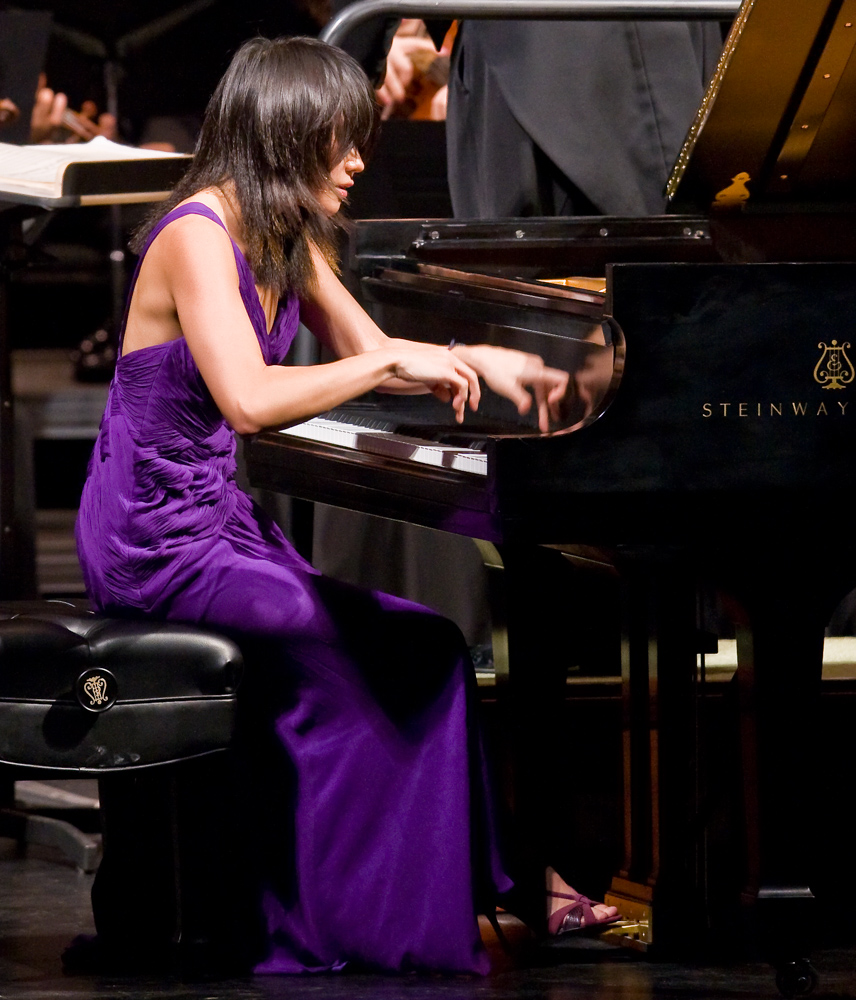CAMA at 100
Community Arts Music Association Celebrates Centennial

What do Sergei Rachmaninoff, Igor Stravinsky, Pablo Casals, and Martha Graham have in common? If you said, “They have all performed in Santa Barbara,” congratulations, and if you added “for the Community Arts Music Association” (CAMA), then congratulations and welcome to a happy anniversary, as that august institution, responsible for so many unforgettable concerts since its inception in 1919, celebrates its 100th year of existence this season.
In fact, when the Russian National Orchestra takes the Granada stage on Wednesday, February 27, as part of CAMA’s International Series, the all-Rachmaninoff program they play will simultaneously mark 100 years of great classical music in Santa Barbara and 100 years since Rachmaninoff left Russia and took up permanent residence in the United States.
Although Santa Barbara’s reputation rests primarily on its extraordinary microclimate and the exquisite taste with which its natural features have been managed and developed, closer acquaintance with our cultural history reveals a deep connection to the arts that’s unrivaled by any other city of comparable size. Among the many organizations responsible for this, CAMA stands alone, not only for its longevity but also for the variety of its manifestations over that time, and for its resiliency in overcoming the monumental challenges of the Great Depression, the Second World War, and radical changes in audience demographics.

Born in the aftermath of World War I, a period of incredible ferment for Santa Barbara and for the United States, CAMA represents the enduring legacy of an outpouring of idealism that remains unequaled in American history. Convinced that great music would have a positive impact on their new neighbors, and determined to reproduce the kinds of events and institutions they had grown up with in major metropolitan centers on the East Coast and in the Midwest, civic leaders such as William Andrews Clark Jr., Bertha Soper, Bernhard Hoffman, Pearl Chase, and Max Fleischmann contributed to the Community Arts Association and built the venues within which a wide variety of concerts, plays, and operas would be performed. Beginning with the old Lobero Theatre and the Potter Theater, which once stood downtown where State Street now passes under the freeway, successive waves of cultured Santa Barbarans pursued ambitious cultural goals by recruiting prestigious outside performers and orchestras to play here and, from time to time, taking up instruments on their own.
In a new book titled Celebrating CAMA’s Centennial: Bringing the World’s Finest Classical Music to Santa Barbara, historian Hattie Beresford has done a marvelous job of tracing the intricate web of people and projects associated with the organization from its origins through to the present day. The book, which will be published in January, makes plain what CAMA’s many patrons and season ticket holders have long known — that this is the city’s cultural wellspring, a source that, even as it changes and revises itself, remains at the center of whatever is happening here in terms of culture.
Expertly researched and amply illustrated with archival photos and documents, Beresford’s book is bound to enlighten even those with an expert’s knowledge of the city’s cultural legacy. Because CAMA has been around for so long and has played such a key role in developing programming, its story touches on every era and phase of every arts venue in town. From the building of the “new” Lobero in 1923 to the remodeling of the Granada beginning in 2005, Beresford details the ongoing infrastructure challenges and solutions that have made Santa Barbara the arts destination that it is today.
Great Programming,
Great Performers
Of course, none of these glorious buildings or any of the thousands of seats they contain would be occupied if it were not for the continuing efforts of those who program them with great performers. Seeing a world-class orchestra live cannot be compared to any other cultural experience. When else do 100 or more virtuoso performers collaborate to realize the aesthetic potential of a single composition? The list of historic orchestras that have visited the city thanks to CAMA reads like a “who’s who” of 20th- and now 21st-century music. The Philadelphia Orchestra came in 1935 under the baton of the legendary Leopold Stokowski. In 1956, Herbert von Karajan led the Berlin Philharmonic, followed by George Szell and the Cleveland Orchestra in 1960 and 1966, and the New York Philharmonic with Leonard Bernstein in 1960.
The Los Angeles Philharmonic has kept up the close relationship established from the beginning through mutual benefactor W.A. Clark Jr., appearing virtually every year since 1920 and bringing a half dozen or more of the world’s most distinguished conductors with it — André Previn, Zubin Mehta, Michael Tilson Thomas, Simon Rattle, Esa-Pekka Salonen, and of course Gustavo Dudamel, who will return with the L.A. Phil on March 6, 2020, to play an anniversary concert that will occur 100 years from the day of the orchestra’s initial Santa Barbara appearance.

In this century, CAMA’s legacy has grown thanks to strong leadership and adventurous programming. The hiring of Mark Trueblood as executive director in 1998 signaled a new level of commitment to professionalism in the day-to-day management of the organization, and Herb Kendall, who served on the board from 1995-2016 and was president from 1999-2002, established an Endowment Campaign that had raised more than $5 million by 2005. Around the same time, in 2001, art historian Bob Light made a substantial gift through his philanthropy the Hesperia Foundation that went directly to the Masterseries at the Lobero, CAMA’s recital program.
No one has had more of an impact on the programming at CAMA than Stephen Cloud, who became a boardmember in 1996 and who has been involved in live music professionally for five decades, both as a manager for such prominent jazz artists as Charles Lloyd and Keith Jarrett, and as a concert booker and promoter. Cloud’s comprehensive knowledge of the business side of classical music complements his excellent and wide-ranging taste. It’s largely thanks to Cloud that we have enjoyed consistent access to players and orchestras of the first rank for the last 30 years. It’s safe to say that without his passion and acumen, CAMA would not have earned the sterling reputation it has today with the world’s top musicians. (Booking great orchestras into a city that’s not New York, Vienna, London, or Berlin comes with significant challenges. The expense of traveling internationally with 100 or more people and their priceless instruments has increased dramatically, and schedules must be established further and further in advance all the time.)
That said, this centennial CAMA season continues in January with renowned violinist Itzhak Perlman and recital pianist Rohan De Silva at the Granada on Tuesday, January 15. On Tuesday, February 5, the Philharmonia Baroque Orchestra comes to town under the energetic baton of baroque specialist Nicholas McGegan, and, later that same month, on February 27, the Russian National Orchestra arrives for the aforementioned all-Rachmaninoff concert. March 2019 is packed with events — Tafelmusik Baroque Orchestra (March 9) and pianist Garrick Ohlsson (March 30), both at the Lobero, and the Philharmonia Orchestra led by CAMA favorite Esa-Pekka Salonen at the Granada on Wednesday, March 20.
After 100 years, CAMA still feels like it is only getting started. Here’s to another century of great music.



